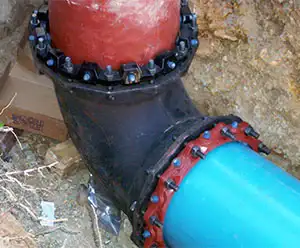In various settings, particularly in healthcare, education, and law enforcement, the use of restraints is sometimes necessary to ensure the safety of individuals and others. Restraints are broadly categorized into two types: physical and mechanical. Understanding the differences between these two forms is crucial for professionals to make informed decisions that prioritize safety and ethical considerations.

1. Physical Restraints
Definition
Physical restraint refers to the direct application of manual techniques to restrict an individual’s movement. This can involve holding, guiding, or physically controlling a person to prevent harm to themselves or others. It’s important to note that physical restraint does not include brief, necessary physical contact for calming or comforting purposes, or assisting a person in performing tasks .
Types of Physical Restraints
-
Manual Holds: Staff members use their hands or arms to hold a person, limiting their movement.
-
Therapeutic Holds: Specific techniques taught to professionals to safely manage individuals in crisis situations.
-
Escort Techniques: Guiding a person from one location to another using minimal physical contact.
Applications
Physical restraints are commonly used in situations where an individual poses an immediate risk of harm to themselves or others, and less restrictive interventions have failed or are deemed inappropriate. They are often employed in psychiatric settings, schools, and correctional facilities .
Advantages
-
Immediate Response: Allows for quick intervention in crisis situations.
-
No Equipment Required: Utilizes the staff’s physical presence and skills.
-
Flexibility: Can be adapted to various situations and individuals.
Disadvantages
-
Physical Strain: Can be physically demanding for staff members.
-
Potential for Injury: Improper techniques can lead to harm.
-
Emotional Impact: May cause distress for both the individual and staff.
2. Mechanical Restraints
Definition
Mechanical restraint involves the use of devices or equipment to restrict an individual’s movement. These devices are typically applied to prevent harm and are designed to be difficult for the individual to remove. Examples include straps, belts, or specialized chairs .
Types of Mechanical Restraints
-
Limb Restraints: Devices applied to the arms or legs to prevent movement.
-
Chest Restraints: Belts or vests that restrict upper body movement.
-
Seclusion Devices: Equipment used to confine an individual to a specific area.
Applications
Mechanical restraints are often used in situations where physical restraints are insufficient or inappropriate. They are commonly found in medical settings, psychiatric hospitals, and correctional facilities .
Advantages
-
Consistency: Provides a uniform method of restriction.
-
Reduced Physical Strain: Less physically demanding for staff.
-
Extended Control: Can maintain restraint over longer periods.
Disadvantages
-
Comfort Issues: May cause discomfort or injury if not properly applied.
-
Dependence on Equipment: Requires maintenance and proper training.
-
Ethical Concerns: May be perceived as more restrictive and less humane.
3. Comparative Analysis
| Feature | Physical Restraint | Mechanical Restraint |
|---|---|---|
| Definition | Manual techniques to restrict movement | Use of devices to restrict movement |
| Flexibility | High; adaptable to situations | Limited; device-dependent |
| Training Required | Yes; specific techniques | Yes; proper application and monitoring |
| Comfort Level | Varies; depends on technique and duration | Varies; depends on device and duration |
| Ethical Considerations | High; must be justified and documented | High; must be justified and documented |
4. Ethical and Legal Considerations
Both physical and mechanical restraints raise significant ethical and legal issues. The use of restraints should always be a last resort, employed only when less restrictive interventions have failed or are deemed inappropriate. They must be used in accordance with established guidelines and laws, ensuring the safety and dignity of the individual.
5. Best Practices for Use
-
Assessment: Evaluate the situation to determine if restraint is necessary.
-
Training: Ensure all staff are properly trained in restraint techniques and the use of devices.
-
Documentation: Keep detailed records of any restraint used, including the justification and duration.
-
Monitoring: Continuously monitor the individual during and after restraint to ensure their well-being.
-
Review: Regularly review restraint practices to ensure they are in line with current standards and best practices.
Frequently Asked Questions (FAQs)
1. What is the primary difference between physical and mechanical restraints?
The primary difference lies in the method of application. Physical restraints involve manual techniques to restrict movement, while mechanical restraints use devices or equipment to achieve the same goal. Both methods aim to prevent harm but differ in their approach and application.
2. Are there situations where mechanical restraints are preferred over physical restraints?
Yes, mechanical restraints may be preferred in situations where physical restraints are insufficient or impractical. They provide a consistent method of restriction and can be maintained over longer periods, which may be necessary in certain medical or psychiatric settings.
3. What are the ethical considerations when using restraints?
Ethical considerations include ensuring that restraints are used only when necessary, minimizing harm, and respecting the dignity and rights of the individual. Restraints should be applied in accordance with established guidelines and laws, and their use should be justified and documented.
4. How can the risks associated with restraints be minimized?
Risks can be minimized through proper assessment, training, and monitoring. Staff should be trained in appropriate restraint techniques and the use of devices, and individuals should be continuously monitored during and after restraint to ensure their safety and well-being.
5. Are there alternatives to restraints?
Yes, alternatives include de-escalation techniques, behavioral interventions, and environmental modifications. These approaches aim to address the underlying causes of the behavior and reduce the need for restraint.
Conclusion
Understanding the differences between physical and mechanical restraints is essential for professionals in various fields. Both forms have their applications, advantages, and disadvantages, and their use should always be guided by ethical considerations and legal requirements. By adhering to best practices and continuously evaluating restraint methods, professionals can ensure the safety and dignity of individuals under their care.

